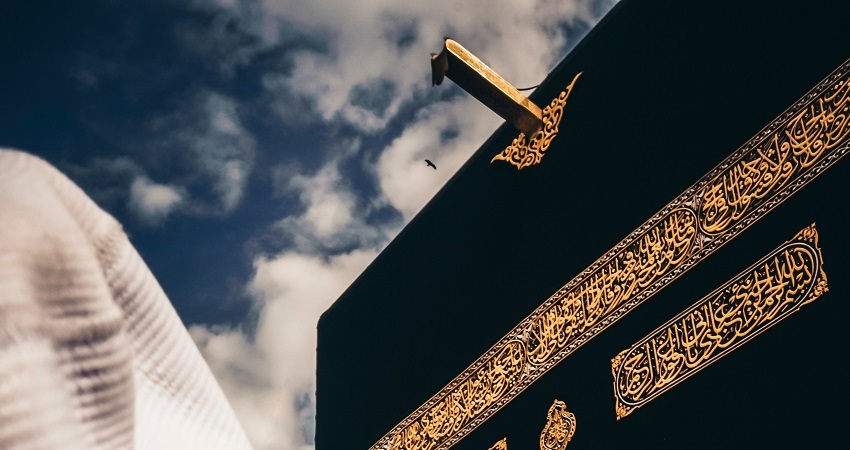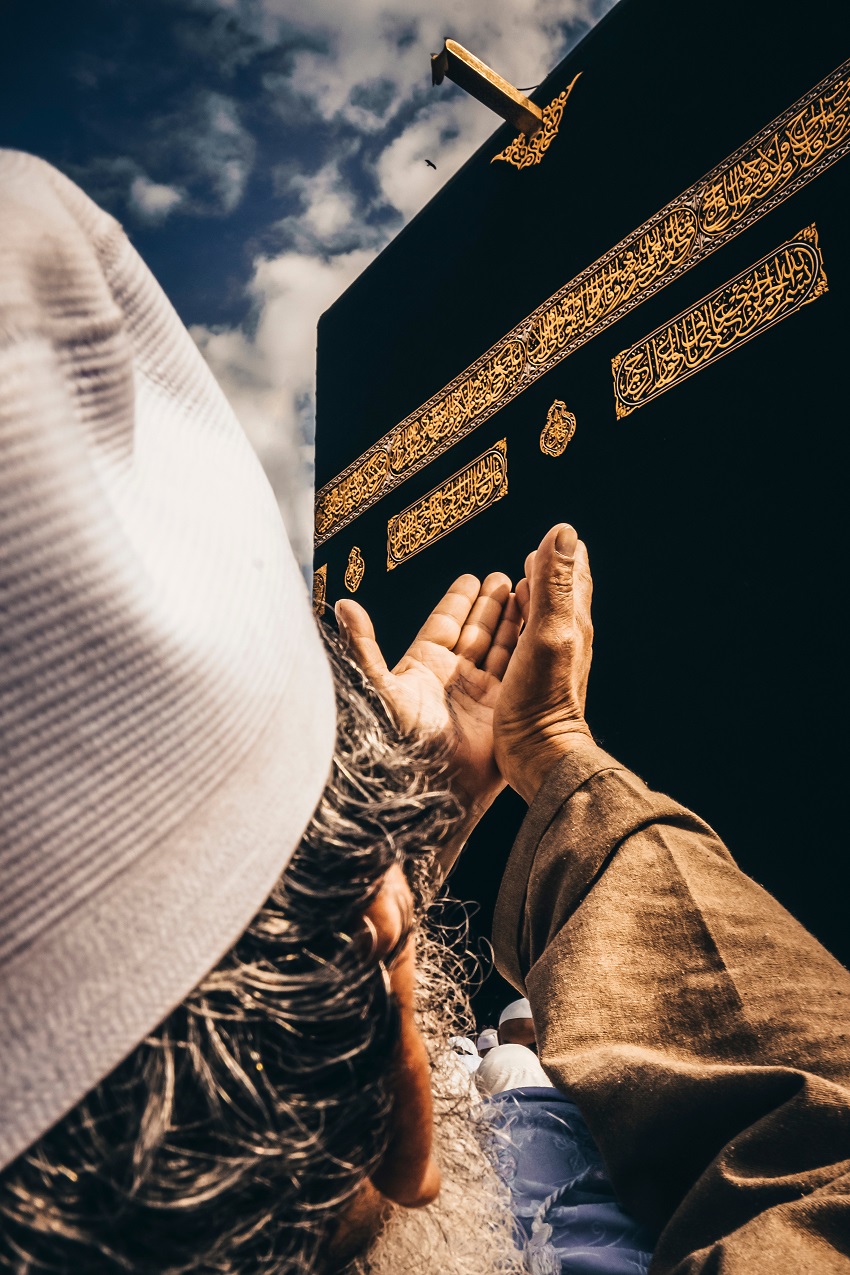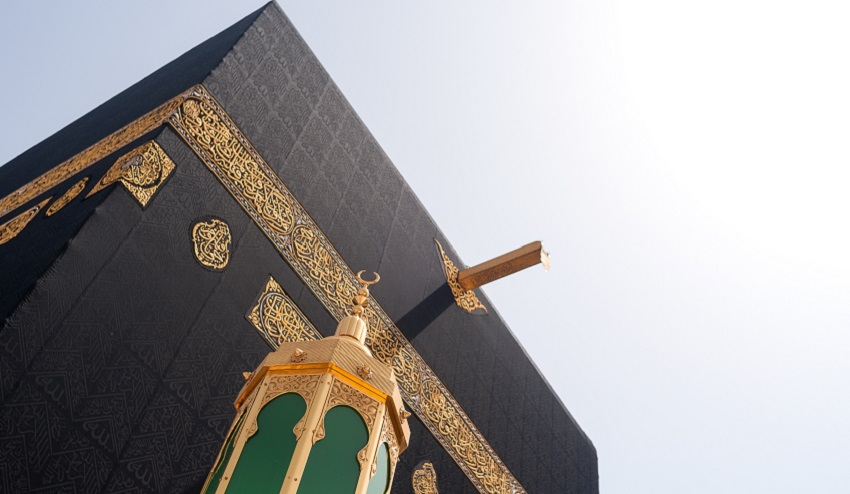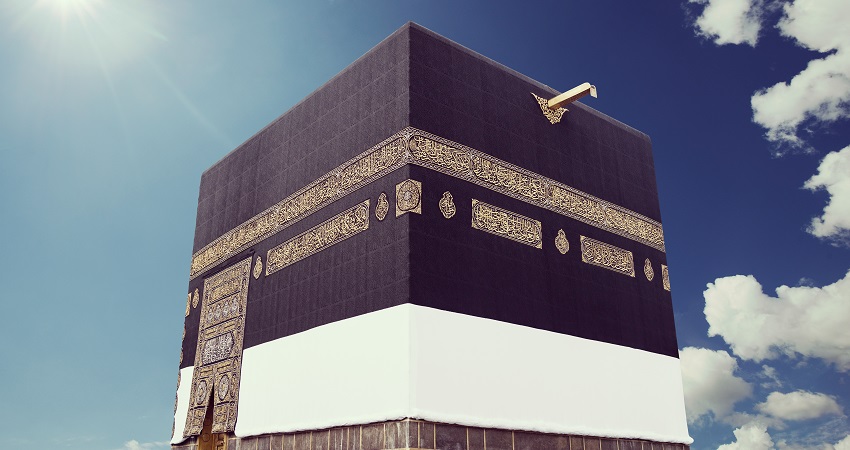Meezab-e-Rehmat, also known as the outlet of mercy, is located on the edge of the roof of the holy Kaaba. It is the smallest yet one of the most beautiful features of the Kaaba. If visiting Makkah for Hajj or Umrah pilgrimage, one must have a good look at the spout and pay their respects.
What is Meezab-e-Rehmat?
In Masjid Al-Haram, Meezab-e-Rehmat is the golden spout from which rainwater falls from the roof of the mosque over Hijr Ismail, the crescent-shaped area outside the Kaaba.
It lies between Rukn-e-Shami and Rukn-e-Iraqi. Legends say that it was under Meezab-e-Rehmat where Prophet Muhammad supplicated. Therefore, followers of Islam consider the stream flowing through it as magical and full of Shifa, which means healing properties. Therefore, the outlet of mercy has great importance in Islamic tradition.
History of Meezab-e-Rehmat
According to historians, the people of the Quresh tribe had built the top of the Kaaba and attached this pipe, which is now known as Meezab-e-Rehmat. Before them, there was no downpipe or a cover over Kaaba. Its first roof was built using the leaves of date trees.
In 1273 A.H, it was Sultan Abdul Majeed Khan who remodelled the Kaaba as well as the Meezab. It was redesigned and reconstructed in 1417 A.H. The dimensions remained the same during the reconstruction.
Suggested Read: Life After Umrah: 5 Things To Do Once You Are Back
A few Arabic words were scripted on the Meezab-e-Rehmat. The words – ‘Ya Allah’ (Lord) and ‘Bismillah Hir Rahman Nir Raheem’ (In the name of the almighty Allah who is the most gracious and merciful) were written on the front part of this sacred outlet.
Structure of Meezab-e-Rehmat
Currently, the Meezab is made of pure gold and has a thick lining made of pure silver. It has a rectangular shape, and on the front, there is a pendant of pure gold, which moves in forward and backward directions. People call it ‘Al-Burqa’ or the tongue.
If you look carefully, there are dates of construction and renewal written on each side of the outlet of mercy. Its durable construction showcases excellent craftsmanship by a jeweller named Makki Sheikh Nasser. The older construction was replaced with a new yet stronger one under the rules of King Fahd.
Meezab-e-Rehmat also has spikes on the sides that face upwards to ensure no bird gathers on its edges. The water that falls from the spout is taken by people as a blessing while performing Hajj or Umrah. They believe that Allah accepts every ‘dua’ that one recites under it.
5 Facts about Meezab-e-Rehmat
- In its first construction, Meezab-e-Rehmat was made of wood, iron and silver-like materials.
- In the past, there was no such structure after the Qurayish tribe. The roof of the holy Kaaba was made of palm tree leaves. Later the edge of Kaaba was rebuilt with stones and wooden carvings.
- In 1554, the spout was covered with a silver mask by Salman Qanuni.
- In 1553, Salem Sani, son of Salman Qanuni, built the Meezab with gold plating.
- Between 1586 and 1594, Meezab-e-Rehmat was reconstructed using pure gold material by Waleed Bin Abdul Malik.
- The width of the outlet of mercy is 26cm, and its length is 253cm. However, there is a portion inside the wall of the Kaaba, which is 58cm long.
- Meezab-e-rehmat has sharp nails installed on the outlines so that no bird can sit on the edge of the holy Kaaba.
Meezab-e-Rehmat might be the smallest piece of the holy Kaaba, it is still a highly revered structure that is beautifully nuanced. If you are visiting the holy Kaaba, do take a minute to admire the allure of the outlet of mercy.
Meezab-e-Rehmat FAQs
What is Meezab-e-Rehmat?
In Masjid Al-Haram, Meezab-e-Rehmat is the golden spout from which rainwater falls from the roof of the mosque over Hijr Ismail, the crescent shaped area outside the Kaaba.
What is the history of Meezab-e-Rehmat?
According to historians, the people of the Quresh tribe had built the top of the Kaaba and attached this pipe, which is now known as Meezab-e-Rehmat. Before them, there was no downpipe or a cover over Kaaba. Its first roof was built using the leaves of date trees.
When was Meezab-e-Rehmat reconstructed?
In 1273 A.H, it was Sultan Abdul Majeed Khan who remodelled the Kaaba as well as the Meezab. It was redesigned and reconstructed in 1417 A.H. The dimensions remained the same during the reconstruction.
What is scripted on the Meezab-e-Rehmat?
A few Arabic words were scripted on the Meezab-e-Rehmat. The words – Ya Allah (Lord) and Bismillah Hir Rahman Nir Raheem (In the name of the almighty Allah who is the most gracious and merciful) were written on the front part of this sacred outlet.
How does Meezab-e-Rehmat look currently?
Currently, the Meezab is made of pure gold and has a thick lining made of pure silver. It has a rectangular shape, and on the front, there is a pendant of pure gold, which moves in forward and backward directions. People call it Al-Burqa or the tongue.
Why does the structure have nails on the edges?
Nails are installed on Meezab e Rehmat to prevent birds from sitting on the structure.











